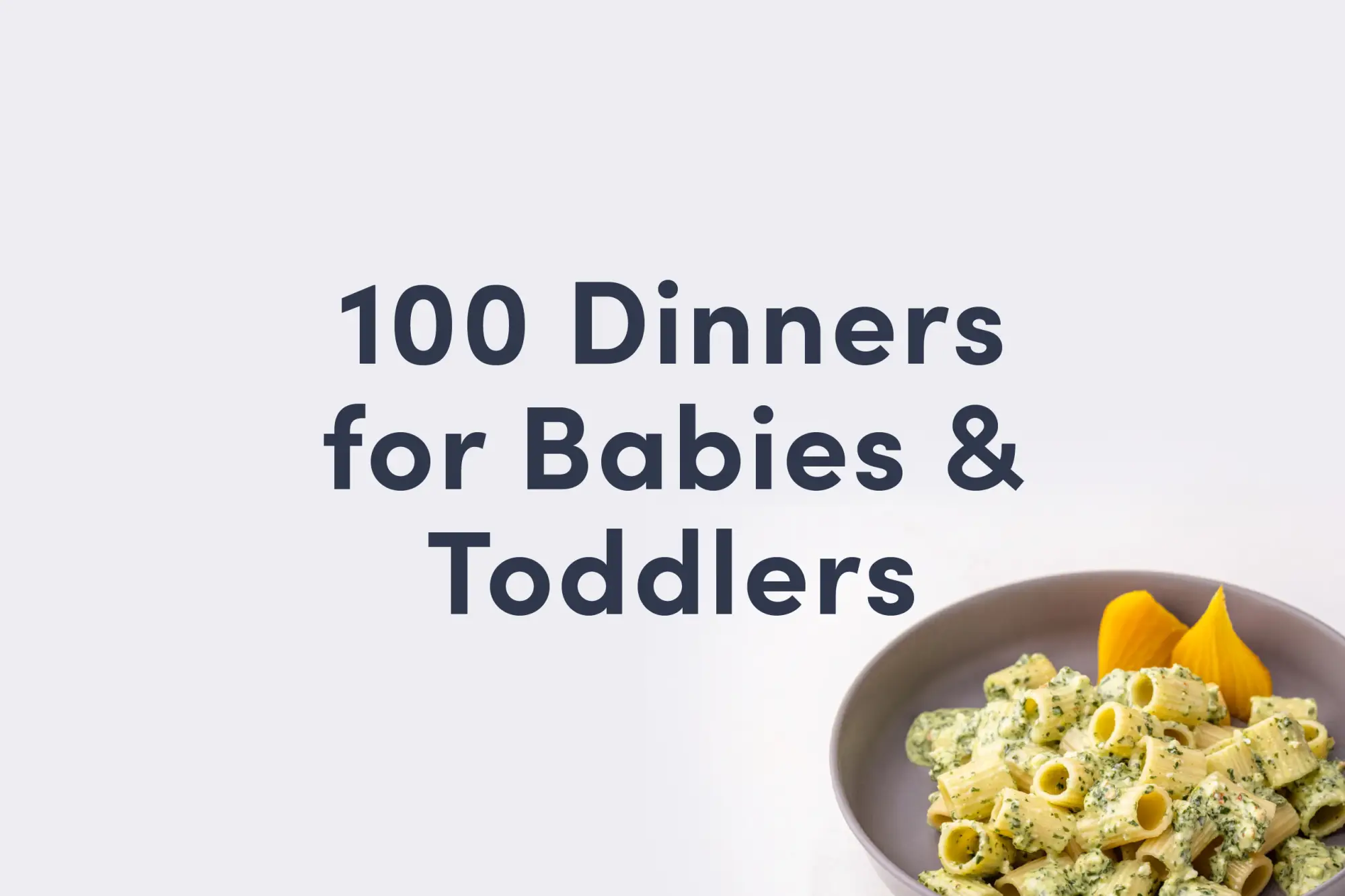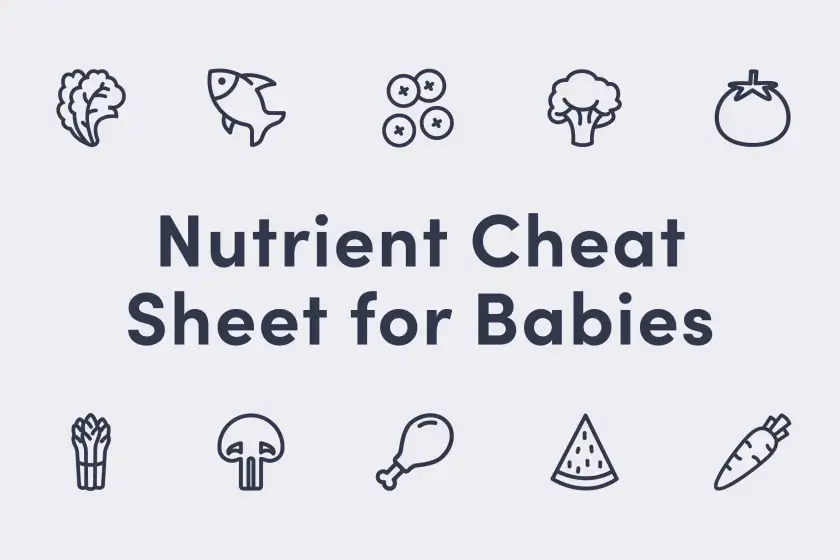Ricotta Cheese
Dairy
Age Suggestion
6 months
Iron-Rich
No
Common Allergen
Yes

When can babies have ricotta cheese?
Ricotta cheese may be introduced as soon as baby is ready to start solids, which is generally around 6 months of age. Choose pasteurized ricotta to minimize the risk of foodborne illness.
Ricotta cheese is an Italian form of cottage cheese, a diverse family of fresh cheeses that originated in ancient times in the lands connecting Africa, Asia, and Europe. Fresh ricotta cheese has a short shelf life, and before the advent of refrigeration, it was prepared and consumed locally or preserved by adding salt and pressing out the liquid to make ricotta forte, ricotta salata, and other firm cheeses. In Italy, the milk of cows, goats, sheep, or water buffalos are used to make ricotta cheese, which can be served in countless dishes, including stuffed into calzone, lasagna, manicotti, and ravioli.
Learn more about choosing cheese to share with babies.
Is ricotta cheese healthy for babies?
Yes, ricotta is rich in protein, fat, calcium, selenium, zinc, and vitamins A, B6, and B12. Together, these nutrients work together to provide the building blocks for growth, development, and brain function. They also help support bone density, taste perception, vision, energy, and immunity to help baby thrive.
While some forms of ricotta can be high in sodium, such as ricotta salata, the amount of sodium that babies eat tends to be low as they learn the skills to feed themselves. Sodium can also offer benefits like supporting baby’s electrolyte balance, hydration, and movement. Furthermore, sharing family meals, even when they contain salt, has its benefits: baby has opportunities to explore a wider variety of food, share their family food culture, and practice eating a variety of textures.
Is ricotta a common allergen?
Yes. Ricotta cheese is commonly made from cow’s milk, and cow’s milk is a common food allergen in young children, accounting for about one-fifth of all childhood food allergies in the United States. Ricotta cheese is also made from sheep or water buffalo milk and dairy products from other ruminants such as sheep, goat, and buffalo may provoke similar allergic reactions to cow’s milk dairy products. That said, there’s good news: milk allergy often disappears with time. Research shows that the majority of children with cow's milk allergy will outgrow it by age 6 and many babies with milder symptoms of milk protein allergy (which can show up as painless blood in stool) are able to successfully reintroduce cow's milk as early as their first birthday, with the guidance of their doctors.
Milk is a known trigger of food protein-induced enterocolitis syndrome, also known as FPIES. FPIES is a delayed allergy to food protein which causes the sudden onset of repetitive vomiting and diarrhea to begin a few hours after ingestion. Left untreated, the reaction can result in significant dehydration. Thankfully, like other forms of milk allergy, FPIES which presents early in life is generally outgrown by the time the child has reached 3-5 years of age. While the exact rates of FPIES are unknown, it is believed to be an uncommon condition (although better recognition of the disease has led to increased reporting in recent years).
Although it is not an allergy, lactose intolerance can result in gastrointestinal symptoms such as abdominal pain, bloating, and diarrhea, after ingestion of dairy items containing lactose. For those with older children who are lactose intolerant (keep in mind this is uncommon for infants and toddlers), some good news: compared with milk and certain other dairy products, many cheeses may be better tolerated by those with lactose intolerance, particularly aged cheeses, which have lower lactose content. Note that if your child is lactose-intolerant, it’s important to find calcium-rich foods to consume regularly to ensure a balanced diet and support bone health. Search for naturally low-lactose cheeses and dairy products labeled “lactose-free.”
If you suspect baby may be allergic to milk, consult an allergist before introducing dairy products like cheese. Based on baby’s risk factors and history, your allergist may recommend allergy testing, or may instead advise dairy introduction under medical supervision in the office. If the risk is low, you may be advised to go ahead and introduce dairy in the home setting. As with all common allergens, start by serving a small quantity on its own for the first few servings, and if there is no adverse reaction, gradually increase the quantity over future meals.
Is ricotta a choking hazard for babies?
No. Fresh ricotta presents a low risk when safely prepared for a child’s age and developmental ability, though firm types of ricotta like ricotta salata do pose an increased risk. To reduce the risk, prepare and serve ricotta in an age-appropriate way as described in the How to Serve section. As always, make sure you create a safe eating environment and stay within an arm’s reach of baby during meals.
Learn the signs of choking and gagging and more about choking first aid in our free guides, Infant Rescue and Toddler Rescue.
How do you serve ricotta cheese to babies?
Every baby develops on their own timeline, and the suggestions on how to cut or prepare particular foods are generalizations for a broad audience.
6 months old +:
Serve a couple of scoops of fresh, pasteurized ricotta cheese in a bowl or directly on baby’s tray or table and let baby self-feed by hand-scooping or practicing with a pre-loaded utensil. Boost flavor by stirring in a small amount of nut butter or mashed fruit, but avoid adding honey, which carries a risk of infant botulism. You can also thinly spread ricotta on strips of toast or a teething rusk. You can also offer a taste here and there of dishes that contain grated or melted ricotta salata.
9 months old +:
Continue to serve fresh, pasteurized ricotta in a bowl or directly on the tray and explore using it as a dip for fresh fruit and vegetables. Ricotta is fantastic for serving veggies vertically (stick them into the ricotta like sticks) which will help interest baby in grabbing them. Boost flavor by stirring in a small amount of nut butter or mashed fruit.
12 months old +:
Continue to offer fresh, pasteurized ricotta cheese in a bowl with mashed fruit or other flavors, or share a meal that contains ricotta, like lasagna. Simply cut the noodles and any other ingredients into bite-sized pieces for toddlers to pick up with their fingers or a utensil. At this age, you can also grate some ricotta salata or other firm ricotta cheeses onto the child’s food.
Get daily meal plans and recipes for babies starting solids in our First 100 Days Meal Plan.
Written by
Expert Tips Delivered to Your Inbox
Sign up for weekly tips, recipes and more!
The content offered on SolidStarts.com is for informational purposes only. Solidstarts is not engaged in rendering professional advice, whether medical or otherwise, to individual users or their children or families. No content on this site, regardless of date, should ever be used as a substitute for direct medical advice from your doctor or your medical or health professional, nutritionist, or expert in pediatric feeding and eating. By accessing the content on SolidStarts.com, you acknowledge and agree that you are accepting the responsibility for your child’s health and well-being. In return for providing you with an array of content “baby-led weaning” information, you waive any claims that you or your child may have as a result of utilizing the content on SolidStarts.com.










